
Cats have unique and interesting noses, and just like their paw pads, the nose can change throughout a cat’s life. But noticing a change in the color of your cat’s nose can be worrying for cat owners, so what does it mean and why does it happen?
Each individual cat has their own normal base color to their nose, which will be similar to their fur color. Changes to the color of a cat's nose can be due to temperature or mood, but they can also be caused by a number of medical problems. Always get your cat checked by a veterinarian if you notice any changes to their nose or skin.Key Takeaways
Every cat has a slightly different colored nose. The color usually depends on the color of their fur because the same pigments control the color of the nose. Age can often cause hyperpigmentation and lentigo, which can cause the nose to change color.
Depending on your cat’s normal nose color, it might be easier or trickier to spot changes. Changes can occur for a number of environmental and health-related reasons. Sometimes a change in color is a cause for concern, but other times it might be completely normal.
Reasons For Your Cat’s Nose Changing Color
1. Temperature Changes
The skin covering a cat’s nose contains lots of tiny blood vessels. When it’s very cold out, these vessels contract, known as vasoconstriction, to reduce blood flow and heat loss from exposed extremities and redirect the blood flow to the vital organs. The nose then looks paler.
This helps to prevent heat loss through the part of the body that has no insulation from fur. In contrast, when it’s hot the vessels dilate (vasodilation) to allow heat to escape, and the nose will look darker or pinker.
If your cat’s nose has changed color due to temperature, as they warm up again or cool down, you’ll see it go back to its normal color and you can relax knowing that it’s nothing to be concerned about.
2. Mood Changes
When a cat’s mood changes, this can also affect the color of their nose. This is down to the same mechanism that causes a color change in response to temperature. When cats are excited, playful, or angry, the blood vessels will dilate and make their nose look darker or pinker.
Nose color can also change slightly when cats are eating, sleeping, or being petted. Depending on the normal base color of their nose, these changes can be very obvious in some cats, and barely noticeable in others.
As with nose color changes due to temperature, this is nothing to worry about, and once your cat’s mood changes, the color of their nose will change again.
3. Lack of Oxygen
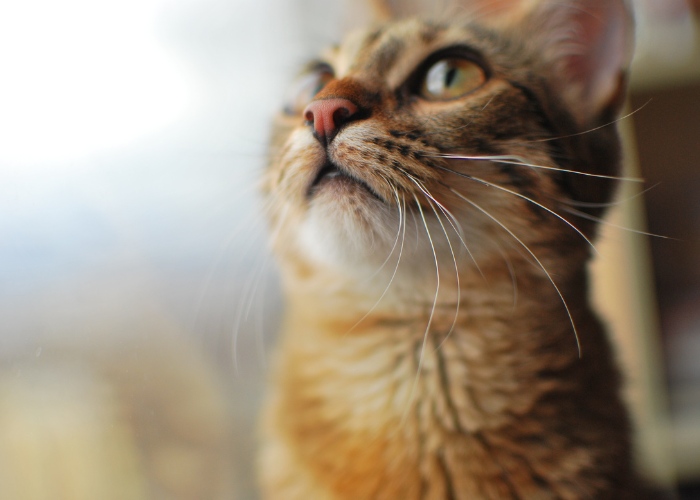
A nose turning blue is a medical emergency, as this indicates your cat is not getting enough oxygen.
Probably the most serious reason for a cat’s nose to change color is a lack of oxygen—this is an emergency. If you notice your cat’s nose has turned blue, take them straight to a veterinarian. This might be due to a heart or respiratory problem, trauma, or toxin ingestion.
If this is the case, you might also notice that your cat’s gums or paw pads are a similar color.
4. Anemia
Anemia is a condition where there isn’t enough red blood circulating in a cat’s bloodstream. It can be caused by a wide range of problems such as internal or external bleeding, bleeding disorders, parasites, kidney disease, bone marrow disease, and some cancers. The most typical and easy-to-spot sign of anemia is a pale or white nose, as well as pale gums.
Your cat’s nose might be temporarily pale due to cold weather, but if it’s consistently pale, you’ll need to get your cat checked by a vet for an examination and blood tests to confirm the anemia and identify the cause.
5. Dehydration
Dehydration is one of the most common causes of a pale nose in cats. Cats can become dehydrated very quickly if they don’t take in enough fluids. But your cat needs to be severely dehydrated for their nose to turn white. Mild to moderate dehydration might cause no color change at all or just a slightly paler nose than usual.
The nose might also be quite dry if your cat is dehydrated. If you’re concerned your cat might be dehydrated, get them checked over by a vet as they might need rehydration support or IV fluids to correct it.
6. Diabetes
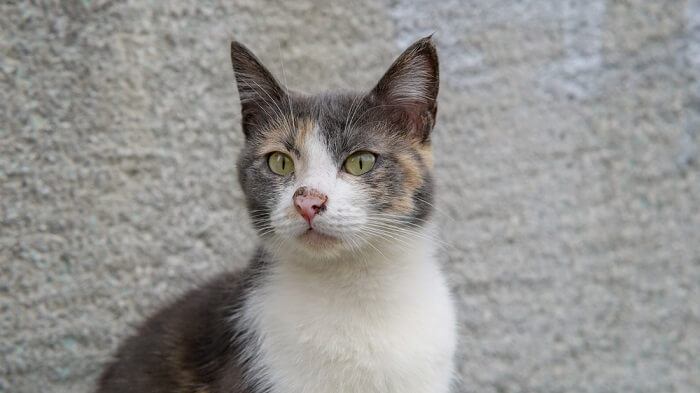
Cats with uncontrolled diabetes might have pale noses in addition to other symptoms.
Diabetic cats are very susceptible to becoming dehydrated because if not well controlled they can become excessively thirsty and urinate more frequently than normal. A pale nose is a common sign of diabetes, as well as weight gain, lethargy, and increased thirst and urination.
If you’re concerned your cat might be diabetic, or feel their diabetic control is poor, speak to your vet. Simple blood and urine tests can confirm or rule out diabetes, as well as assess whether their current treatment is working effectively.
7. Feline Leukemia Virus
Feline leukemia virus (FeLV) is a serious and fatal virus that can infect cats and cause a range of symptoms that develop throughout their life. Thankfully, the majority of cats are vaccinated against this virus, so it’s very rare.
But a pale nose can be an early warning sign of feline leukemia virus—cats with the virus bleed more easily and are more susceptible to developing anemia because they don’t have as many red blood cells. Talk to your vet for advice on managing feline leukemia, and ensure your pet is up to date with their vaccinations.
8. Hypothermia Or Frostbite
We’ve talked about how a cat’s nose changes color when it’s cold, but when a cat gets extremely cold this change can be more concerning. In extreme cold, or if exposed to cold for an extended period of time, the blood vessels become severely constricted, and circulation decreases as the body is focused on keeping vital organs functioning. Eventually, the cat can become hyperthermic if the body cannot get warm.
Frostbite can cause some interesting and unusual changes in nose color, depending on your cat’s usual nose color. The nose can turn red, gray, or even blue! If you think your cat has frostbite or hypothermia, take them straight to the vet as this is an emergency.
9. Skin Cancer
Probably the biggest concern if you see a change in your cat’s nose color is skin cancer. Typically, cancer doesn’t cause the nose to become paler, but some types of cancer can develop on your cat’s nose that might cause it to change in color or appearance.
Paler-colored cats, especially white cats, are more susceptible to these as their skin is more easily damaged by sun exposure. Melanoma and squamous cell carcinomas are tumors that can occur on the nose, as well as other forms of skin cancer. If you notice any abnormal growth or color change around your cat’s nose, get them checked by a vet as soon as possible.
Final Thoughts

Brief changes in nose color are usually not a cause for concern, but have a vet check color changes that last.
Cat’s noses are sensitive and intriguing, and they respond to the environment around them as well as what is going on internally in the rest of the body. Depending on the base color of your cat’s nose, it might be tricky to spot changes in nose color.
Brief changes in color followed by a return to normal are usually nothing to worry about and are probably related to the temperature or your cat’s mood. But regular or prolonged color change could be a sign of a serious health problem, so discuss any changes in your cat’s skin or nose color with your veterinarian.
Also Read: Understanding Your Cat’s Five Senses
Frequently Asked Questions
Why does my cat's nose change from pink to white?
Noses can change color due to changes in temperature or changes in mood. But it can also signal a health problem, so it’s important to always get advice from your vet.
What does an unhealthy cat nose look like?
An unhealthy cat's nose might be dry, have flaky skin, or have some changes to the color or appearance of the skin. Always get this checked by a vet.
What does it mean when a cat's nose turns black?
This may be something called hyperpigmentation when there is an excessive amount of pigment in your cat’s nose, and it is completely harmless. But any changes in your cat’s skin should always be checked by a vet as there can be other more sinister causes.
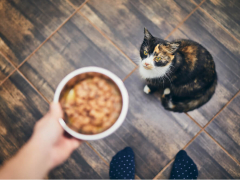


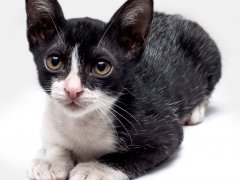
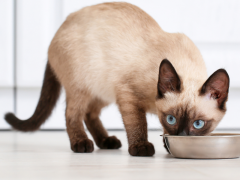



How do i keep my cat away from my plants during the night?
Hey Stacey, good question! It can be difficult to keep just about anything away from a determined cat, but putting them in high, difficult-to-reach places should help. Most cats won’t be so drawn to plans that they’ll go climbing in pursuit of a nibble of one, but a casually curious cat can usually be deterred by having the plant a little bit out of reach. Regardless, toxic plants shouldn’t be in the house at all—just too risky even with precautions in place.